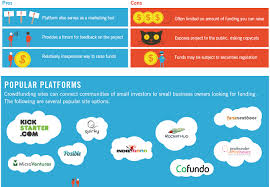Stefanie Amini| Cloudtweaks
Nowadays almost any type of software you can imagine is available to use straight from the cloud. People are longer needed to install the software as it happened only a few years ago, because the data is streamed right on their browsers. There’s no need to mention how many benefits this brings up, but it can be quite useful to have a look at how this shift affected customer support and the related user voice.
To put it straight up, during the last years customer support has radically shifted from software delivery to the customers’ ability of being heard.
Next, we’ll provide you with a more in-depth analysis over the ways in which cloud has transformed customer business support:
Customer Portability
One of the most important ways in which the cloud has revolutionized customer support is through the re-introduction of subscription billing. Where business consumers once used to pay lots of money straight ahead for a software piece, they now simply rent it month after month.
This change brings up two interesting consequences:
1. The customers can do extensive trials for a tiny price
2. They are free to cease using the product (and cancel their subscription) whenever they wish
The result is that customer satisfaction has become of utmost importance to fulfill, and thus customer support has quickly turned into an essential arsenal tool to have.
Try Before Buying
Customer support is absolutely critical during the trial evaluation period of a software piece. Nowadays, most software packages offer extended testing periods, for the sole purpose of giving the customer enough time to consider if that software is useful for his purpose or not.
During this trial period, the support team gains a very important role, since he is the one responsible for driving customer revenue.
Insight on How Customers are using the Software
Software which is set-up at the customer site can pose many downsides, but one of the biggest of them is that you rarely have any Intel on how your customers are using your software. While it’s often possible to integrate logging functions into it, it used to be often quite difficult (if not impossible) to gain access to this type data.
Cloud-based applications make it very easy to monitor and interact with your users by their nature. It’s now a lot easier to tell how customers are using the product, what features they rely on most often, and how much of their time they spend within it.
For customer support, this makes it a lot easier to register error and activity logs and trace down the origin of the issue. No longer has the customer had to send an e-mail log file or allow remote administrator access, since everything is available right from the cloud.
Unicode Base
One of the biggest problems with installed software is that customers had to update it way too often. For any minor bug fix, a new version would require to be released, and users had to resign installing it. However, with cloud technology this is no longer needed, since every time a customer reports an issue it is immediately transferred to the development team where it can be fixed right away. This fact has greatly eases the work of customer support, which was mainly responsible for telling users why these regular upgrades were required.
Enhanced Customer-Vendor Relationship
In the past, customers who were unhappy about their purchase had the sole option of telling their friends about it, but not much else. On the other hand, the big boost in social media development nowadays has increased the customer’s potential of speaking out their frustration. Because of this, the customer-vendor relationship has changed in itself. The customer support departments are no longer rewarded as simple help tools, but also as long-term marketing departments.
These are the main changes that cloud technology has brought to customer support. However, there are also some tools to help with customer care. Many of them are in the cloud, which makes them easy to adopt and more user-friendly than ever.
They encourage self-service, crowdsourcing, live chat and monitoring of social media as well as social customer service.
Here are the most important of them:
Salesforce
Salesforce is a marketing, sales, and service app, which specializes in providing users a better and more enhanced support as they browse through your site.
Zoho
Zoho offers various tools for enhancing your online campaign. They provide a word processor, a presentation tool, a spreadsheet application, plus a few more site-managing tools.
WalkMe
WalkMe enables you to simplify the browsing experience for your users and eliminate any further confusion which might occur. It’s like enhancing your website with a GPS which swiftly guides the users’ navigation throughout your site.
LivePerson
LivePerson is a tool which allows you to create real-time connections with your customers and help increase your customer conversion rate.
ZenDesk
ZenDesk is a company which provides support ticket and customer service software solutions. They provide a 30-day free trial which allows you to accommodate yourself with their web-based solutions.
NanoRep
NanoRep is a self-learning customer support tools which can help to increase customer conversion with up to 20%. It works by adding a “Have a Question?” widget to your site. Once users enter their queries, they are automatically given an answer from the application’s database right away.
From all of these companies established purely to help the customer while using cloud technology, we can see that it’s very much a vital part of the business. It has certainly transformed the customers experience and enabled further brand loyalty that goes beyond the product itself, but because of the ease of use.













